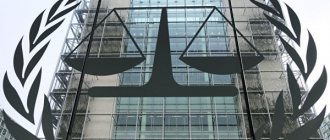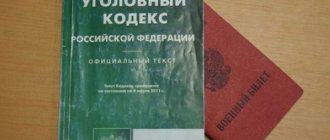An article of the Criminal Code of the Russian Federation contains such a criminal act as slavery in the section of crimes against freedom, honor and dignity of the individual.
Slave markets have long ceased to exist. Is the issue of slavery relevant today? How is the fight against enslavement going on a global scale? How does the Russian legislator define this phenomenon and how does it propose to punish slave owners? The answers to these questions are given in the article. Multi-channel free hotline Legal advice on criminal law. Every day from 9.00 to 21.00
Moscow and region: +7 (495) 662-44-36
St. Petersburg: +7 (812) 449-43-40
History of slavery
The slave system of the Ancient World is known to those who have mastered the basic history course at school. The first mentions of such a system of relations appear in sources even before the dawn of Egyptian civilization.
Immediately after the ancient people mastered agriculture, in addition to hunting and gathering, they felt the need to increase the labor force. In those days there was an abundance of free land, but there were not enough hands to cultivate it.
Therefore, after military battles, the process of taking prisoners replaced the destruction of enemy soldiers and civilians. Becoming a kind of instrument of production, prisoners were mercilessly used by their enslavers.
Slaves were a major part of not only the society of Ancient Egypt, Ancient Greece and the Roman Empire, but also Europe and Russia in later centuries. The most striking period of the heyday of labor exploitation was the time of the development of America. For this purpose, from the African continent to the New World, according to various sources, from 650 thousand to several million people were exported, enslaved by the newly minted white-skinned Americans.
The Civil War occurred due to the liberation of black slaves by the US authorities.
Here is part of the historical documents containing a definition of the phenomenon of exploitation of some people by others:
- “The Code of Justinian,” reflecting the norms of Roman law (based on the structures contained in it, the system of modern civil law was built).
- The Slavery Convention adopted in 1926 by the League of Nations.
- United Nations Universal Declaration of Human Rights (1948).
According to the norms, slavery is a system of relations when, in relation to a person, another person carries out actions inherent in the right of ownership, in whole or in part. The last couple of documents are currently in force; unlike the first, they condemn the becoming of people as slaves.
Problems of qualification of the use of slave labor in the Russian Federation
Khashin Daniil Olegovich, student
Moscow State Law University
named after O. E. Kutafin
annotation
. This article examines the sources of regulation of the prohibition of slavery and slave labor, analyzes such forms of slavery as servitude, debt bondage, and considers different points of view regarding the moment of the end of the crime provided for in Art. 127.2 of the Criminal Code of the Russian Federation.
Keywords
: slavery, slave labor, criminal liability, Convention.
Slavery as a phenomenon has been known to mankind since ancient times, for example, the first mention of slavery dates back to the beginning of the third millennium BC. e. in the territory of Mesopotamia. Slavery was widespread until the end of the 19th century. (abolished in the USA in 1863, in Spain - in 1886, in Ethiopia - in 1930, in Saudi Arabia - in 1950). The last country in the world to officially abolish slavery was Mauritania (in 1981). But nevertheless, the income from the use of forced labor amounts to a little as much as $150.2 billion per year according to the International Labor Organization [1]. This is due to the fact that in some countries the abolition of slave labor exists only de jure, or too lenient penalties are applied to slave owners.
In Ushakov’s dictionary, “slavery” means “exploitation, oppression of some people by others” [2]. It is also worth referring to the Slavery Convention of September 25, 1926, “slavery” is defined as the position or condition of a person in respect of whom all or some of the powers inherent in the right of property are exercised [3]. In our opinion, this concept is the most complete and open, although some scientists have criticized this definition. For example, it was proposed to add to the current disposition responsibility for forced labor, and not just for the use of slave labor [4].
Regarding legal regulation, there are many legal acts that establish important aspects of preventive influence on citizens and people in order to prevent the commission of such crimes. In particular, we can say about international instruments such as the Slavery Convention 1926, the Universal Declaration of Human Rights 1949, the International Covenant on Civil and Political Rights 1966, the International Covenant on Economic, Social and Cultural Rights 1966, the Convention on the Rights of the Child 1989, the Convention on the Elimination of All Forms of Discrimination against Women 1979, which stipulate that the use of slave labor is an international crime, that it is necessary to take various measures to combat crimes in this area and apply strict sanctions for their fulfillment.
One cannot ignore domestic sources, for example, the Constitution of the Russian Federation, in particular in Art. 37[5], which states that forced labor is prohibited in Russia, that everyone has the right to work that meets safety and hygiene requirements, to remuneration for work without any discrimination. The next source of legal force is the Criminal Code of the Russian Federation. It is important to note that before some changes were made to the Criminal Code of the Russian Federation in 1996, only minors were subject to protection in respect of whom illegal and immoral actions were carried out. Undoubtedly, this caused indignation in society, because... a number of people found themselves outside the scope of criminal law protection. The need to expand the circle of victims is due to the dynamic development of transnational crime, which has recently acquired more organizationally sustainable forms [6].
It is important to pay attention to such a specific source of law as clarifications of higher courts. Despite the fact that there is no case law in Russia, and that some scholars do not recognize acts of the highest courts as sources of law, one cannot but agree that such decisions have important legal significance for law enforcement and the further development of criminal law. Just recently, Resolution of the Plenum of the Supreme Court of the Russian Federation No. 58 “On judicial practice in cases of kidnapping, illegal imprisonment and human trafficking” was published [7], which covers human trafficking to a greater extent than the use of slave labor. But the Resolution of the Plenum of the Supreme Court, which would ensure uniformity in the application by courts and pre-trial bodies of legislation on criminal liability for the use of slave labor, is currently missing. In this regard, some difficulties arise in making a correct and fair judicial decision. An example of such difficulties is the case described in the monograph by Yu.Yu. Akimova [8]. In this situation, two individuals demanded urgent repairs of their vehicle without a queue, threatening to set the service station on fire. The investigative authorities qualified their actions under Part 1 of Art. 127.2 of the Criminal Code of the Russian Federation, because There was no extortion from the criminals because they paid for part of the work. The district court did not agree with the investigative authorities due to the fact that there was no fact of the exercise of any powers inherent in the right of ownership and reclassified their act under Part 1 of Art. 330 of the Criminal Code of the Russian Federation, i.e. arbitrariness. Based on the above, we can conclude that some kind of clarifying act of the higher courts is extremely necessary.
It is also worth mentioning human situations similar to slavery. Thus, the Additional Convention on the Abolition of Slavery, the Slave Trade and Institutions and Practices Similar to Slavery of September 7, 1956, distinguishes debt bondage, serfdom, and they, based on their content, are not considered slave labor [9].
Debt bondage is understood as a situation or condition arising as a result of the debtor pledging his personal labor or the labor of a person dependent on him to secure the debt, if the properly determined value of the work performed is not counted towards the repayment of the debt or if the duration of this work is not limited and its nature is not defined.
Serfdom is that use of land in which the user is obliged by law, custom or agreement to live and work on land belonging to another person, and to do certain work for such another person, either with or without compensation, and cannot change this condition. [10]. In our opinion, in modern Russia this phenomenon is not so widespread and is more typical for 3rd world countries
It is also necessary to say about the state of servitude. Unlike slavery, a state of servitude can be characterized as a freer position of a person, since the entire triad of powers of property rights is not established over him and, according to L.V. Inogamova-Khegai, it is covered by the norm provided for in Art. 5.27 of the Code of Administrative Offenses of the Russian Federation “Violation of labor and labor protection legislation”, if they do not fall under any other provisions of the Criminal Code of the Russian Federation [11].
This judgment is confirmed by the practice of the ECtHR, as in the case of Siliadin v. France, in which the applicant, an eighteen-year-old Togolese national, was forced to work for several years as an unpaid domestic servant fifteen hours a day, seven days a week, the Court found that the treatment to which she was subjected amounted to servitude and forced labor, although not was slavery. The Court held that, although the applicant was clearly deprived of personal autonomy, she was not kept in slavery because there was no legal right of ownership over her that would reduce her to the status of a “thing” (§ 122) [12].
At the moment, the dispositions of Art. 127.2 there is no distinction between slave labor and similar human conditions. Therefore, the courts have no choice as to how to qualify these acts under this article.
Most scientists agree on the moment of the end of the crime provided for in Art. 127.2 of the Criminal Code of the Russian Federation - from the moment of actual use of slave labor of another person, if the victim, for reasons beyond his control, cannot refuse to perform work or services. Consequently, the amount of time worked when performing such work does not matter.
There is another point of view, according to which this crime is of a continuing nature [13]. But we can just as easily talk about the continuing nature of the crime, for example, when the same slave is brought to work periodically, providing time for rest. In this case, the use of slave labor simultaneously acquires both a continuing and continuing character, without forming a set of crimes.
If the slave does not begin to carry out the instructions of the criminal, then in this case the crime will not be completed, because the use of slave labor implies at least the commission of two integral actions:
— establishing and ensuring the permanence of the victim’s slave state;
— and the appropriation of the results of the labor of a person who found himself in slavery.
As a result, compulsion to slave labor, not completed due to circumstances beyond the control of the person, must be qualified under Part 3 of Art. 30, i.e. like an attempt on Art. 127.2 of the Criminal Code of the Russian Federation [14].
In conclusion, I would like to note that, even despite the fact that liability for the use of slave labor provided for in Art. 127.2 of the Criminal Code of the Russian Federation, was introduced back in 2003, there are still some gaps in the unity of law enforcement, such as:
1. the absence of any clarifying act of the higher courts of the Russian Federation;
2. as well as a thin border between slavery and similar human conditions (debt bondage, serfdom).
Bibliography
1. Internet portal RosBusinessConsulting. https://www.rbc.ru/economics/20/05/2014/57041cff9a794761c0ce9f26.
2. Ushakov’s explanatory dictionary. https://ushakovdictionary.ru/word.php?wordid=62277.
3. Slavery Convention of September 25, 1926. https://www.un.org/ru/documents/decl_conv/conventions/convention_slavery.shtml
4. Akimova Yu.Yu. Use of slave labor (criminal legal aspect): Monograph - M., 2011. P. 76.
5. Constitution of the Russian Federation. https://online3.consultant.ru/cgi/online.cgi?req=doc&ts=20136664820011940241984961242&cacheid=169820DE4BC799B5BDEAB58DEA75C386&mode=splus&base=LAW&n=2875&dst=100067&rnd=CC2 BA2B51C1AD5ED29B3F1ABB27DE8C9#7nlhzum79mo.
6. Trafficking in persons and the use of slave labor: an analytical review of the genesis, some criminal legal and criminological aspects.
7. Resolution of the Plenum of the Supreme Court of the Russian Federation dated December 24, 2019 N 58 “On judicial practice in cases of kidnapping, unlawful imprisonment and human trafficking.” https://online3.consultant.ru/cgi/online.cgi?req=doc&ts=20136664820011940241984961242&cacheid=B0E38A6108E8F01F02C24F52C84AC189&mode=splus&base=LAW&n=341379&rnd=CC2BA2B5 1C1AD5ED29B3F1ABB27DE8C9#24662vwxrll.
8. Akimova Yu.Yu. Use of slave labor (criminal legal aspect): Monograph - M., 2011. P. 68.
9. Supplementary Convention on the Abolition of Slavery, the Slave Trade and Institutions and Practices Similar to Slavery, September 7, 1956. https://www.un.org/ru/documents/decl_conv/conventions/supplementconvention_slavery.shtml.
10. Supplementary Convention on the Abolition of Slavery, the Slave Trade and Institutions and Practices Similar to Slavery, September 7, 1956.
11. Inogamova-Khegai L.V. Forced slave labor in international and national law. C. 7 https://elibrary.ru/download/elibrary_20359103_60201699.pdf
12. Guide to the application of Article 4 of the Convention prohibition of slavery and forced labor. Council of Europe/European Court of Human Rights, 2014 p. 6.
13. Khabarov A.V. Criminal law of the Russian Federation. A special part. Part 1. 2005. P. 152.
14. Current issues of qualification of the use of slave labor (Galakhova A., Akimova Y.) (“Criminal Law”, 2007, No. 4).
Slavery in the modern world
All world states have come to ban the exploitation of slave labor, but to this day this phenomenon occurs everywhere. This is due to the fact that in a market economy, the profit of the owner of the enterprise depends on the level of payment of labor. The cheaper it is, the better. In addition, the sale of people is an illegal business, the profitability of which is comparable to the sale of drugs and weapons.
Of course, in most cases, modern slavery has no resemblance to classical slavery, when people were equated with animals. Today it is more appropriate to use the term “forced labor” - performing labor duties under fear of being punished, including physically.
The exception is:
- performing work duties while performing military service as provided for by law;
- work during emergency situations;
- forced labor imposed as punishment by the court.
Article 37 of the Constitution of the Russian Federation proclaims a ban on such work and discrimination in receiving remuneration, guarantees citizens the performance of paid work not lower than the minimum wage and the free choice of occupation. Violation of this freedom is a criminal offense.
Corpus delicti
The corpus delicti under Art. 127.2 of the Criminal Code of the Russian Federation is formal, that is, the act will be considered committed from the moment the victim began to perform the actions required of him forcibly .
The composition consists of the following elements:
- The object of the criminal act is the right to work freely of one’s own free will, regulated by the Constitution.
- Using the activities of a person who works against his will, refusal is impossible due to circumstances beyond his control, constitutes the objective side of a criminal act. The attacker carries out actions that are usually reproduced by the owner of any property (owns, uses, disposes of), all or each separately.
- The subject is general, provided for in part 1 of Art. 20 of the Criminal Code of the Russian Federation (at the time of committing the crime he must be 16 years old).
- The subjective side is expressed in the form of direct intent, the subject of the crime clearly represents and is aware of his actions and desires the results of his unlawful act.
This crime is considered continuous, which means that similar episodes are repeated by the offender until the illegal activity is stopped, without forming several crimes.
Second commentary to Art. 127.2 of the Criminal Code of the Russian Federation
1. The main direct object of the crime is social relations that ensure a person’s right to freedom of movement and choice of place of stay (residence). An additional object is social relations that guarantee the human right to free, safe and paid work.
In qualified compositions, an additional object is also social relations that ensure the inviolability of human life and health.
2. The act consists of the use of forced labor of a person in respect of whom the powers inherent in the right of ownership are exercised. A mandatory feature of a crime is the attitude of the perpetrator towards the victim as a slave, manifested in ignoring his constitutional rights and freedoms, brutal suppression of disobedience, unsuitable conditions of detention, etc.
The crime is considered completed from the moment the victim begins to use forced labor.
3. The subjective side is characterized by direct intent.
4. The subject of the crime is a person who has reached the age of 16 years.
5. Most of the qualifying and specially qualifying characteristics coincide with the corresponding characteristics of human trafficking.
Blackmail (equated to violence or the threat of its use, specified in Part 2 of Article 127.1 of the Criminal Code) is the threat of disseminating information that discredits the honor and dignity of the victim or his loved ones or undermines their reputation (for example, information about the commission of an offense, an immoral act). It does not matter whether the information provided is true.
Comment on the article
An additional object is human freedom itself. If, in order to perform the relevant activity at the “owner”, the victim was initially deprived of liberty and held, he will be judged only under this article, without reference to the article providing for unlawful deprivation of liberty.
Another optional object against which the criminal attack is directed is the life and health of the victim. An important aspect of the objective side is the real impossibility of a subordinate to stop doing the tasks assigned to him by the “owner”.
In the absence of this feature, if it is proven that the forced laborer was not in danger in case of refusal, the criminal case will be terminated for lack of corpus delicti. On the contrary, the presence of a staff does not depend in any way on the fact of payment for the activity performed, its duration, or working conditions.
The second part of the article provides for aggravating features:
- multiplicity of affected persons;
- the minor age of the forced laborer (the accused must understand that the person is under 18 years of age);
- committing actions using blackmail or violence, as well as threats of use;
- abuse of official position by an attacker;
- confiscation of an identity document from the victim, concealment or destruction.
Blackmail refers to the dissemination by a criminal of information discrediting the honor and dignity of the victim. Having become public knowledge, this information, whether correct or distorted, will cause damage to the reputation of the victim and influence his resigned performance of enslaving acts.
The legislator provided for punishment for the perpetrator not only in the form of imprisonment, but also forced labor, which to some extent corresponds to the ancient rule of “tit for tat.” A convict punished in this way must feel the full brunt of bondage.
The crime will be considered especially serious if the subject acted as part of an organized group or caused serious harm to the victim, or death due to negligence. The maximum prison term imposed by a court decision is 15 years.
Punishment and responsibility
- If the crime is committed in its simplest form, then the law provides for either forced labor or imprisonment. Both are within a five-year limit.
- If the offender is convicted under the second part of Article 127.2, the term of forced labor does not change. However, imprisonment is already calculated from three to ten years. A ban on engaging in any type of activity (or certain positions) for a period of fifteen years cannot be ruled out.
- Imprisonment for 8 – 15 years plus restriction of freedom within a year (optional). Such punishment awaits attackers whose actions will be qualified under the third part of Article 127.2.
Services and organizations that oppose slavery
In Russia there is a voluntary movement “Alternative”, it has been fighting slavery for more than two years:
- labor;
- sexy;
- "beggars" when dependent people are used as beggars.
At the state level, the Ministry of Internal Affairs is involved in suppressing the slave trade; to assist it, a Government Commission on Migration Policy has been created, and the post of Commissioner for Human Rights has been established.
The International Labor Organization resolves slave issues at the interstate level. The organization conducts campaigns to identify new modern forms of slave life, takes steps to eradicate them, calling on states to change domestic legislation and wage constant struggle.







